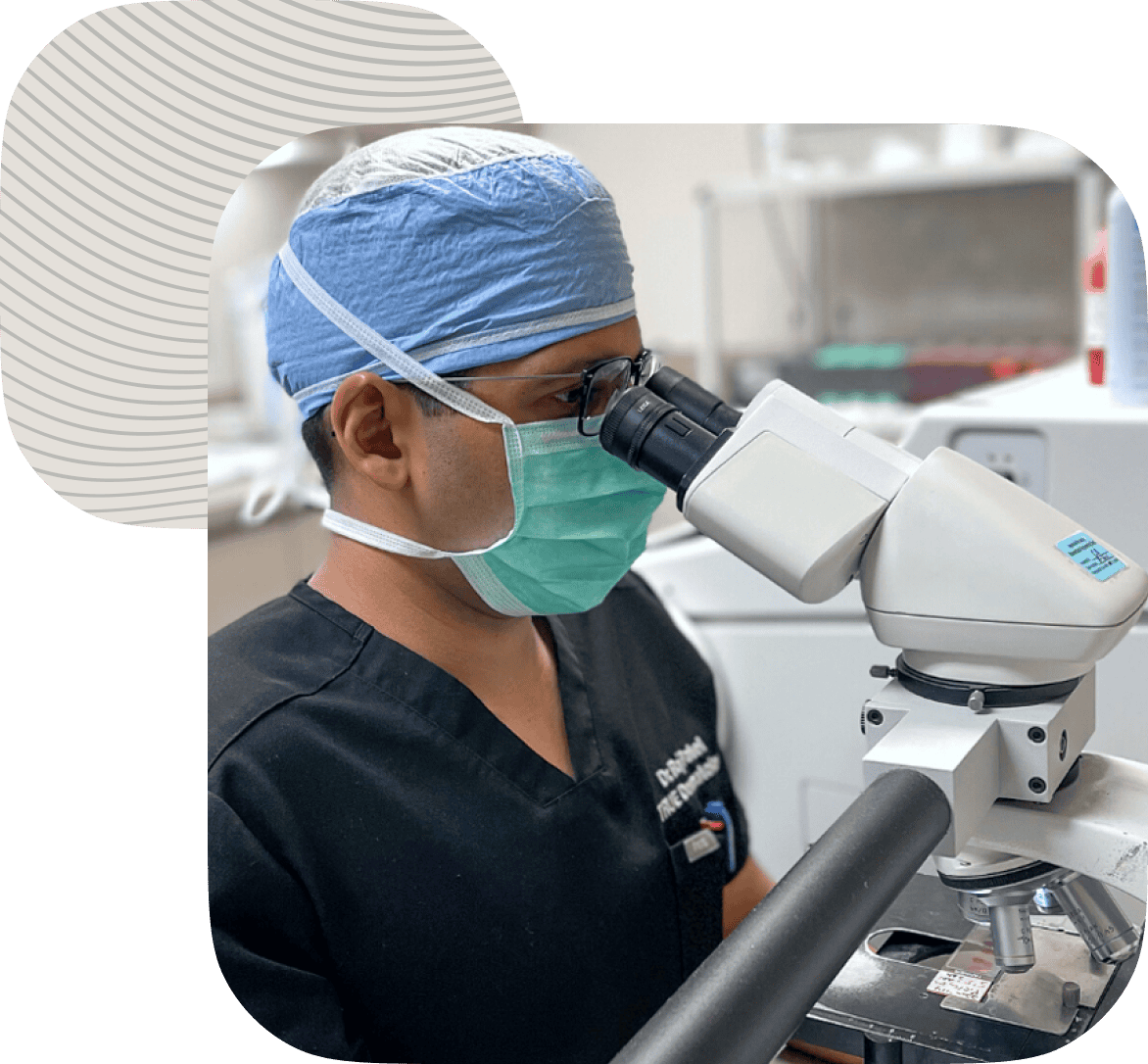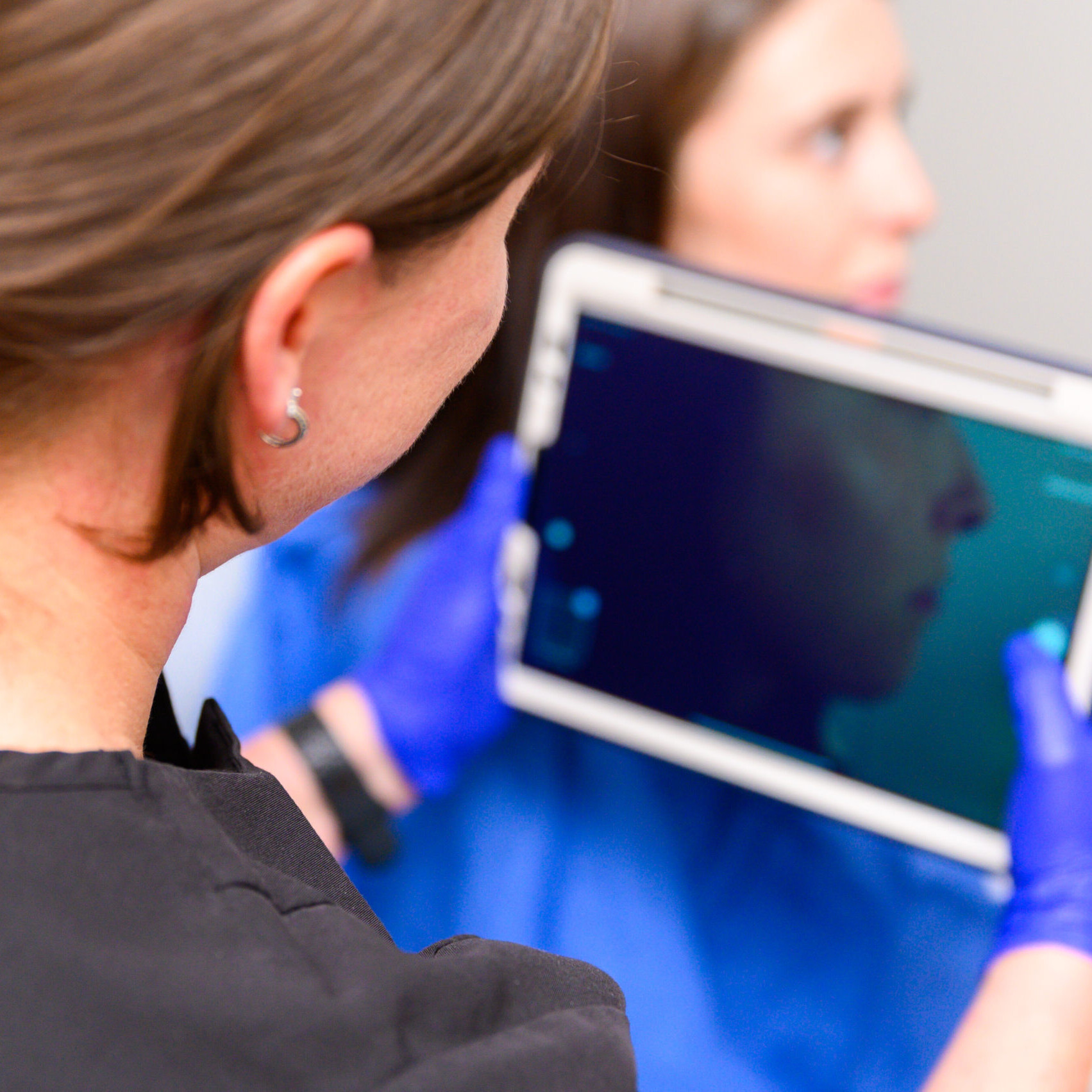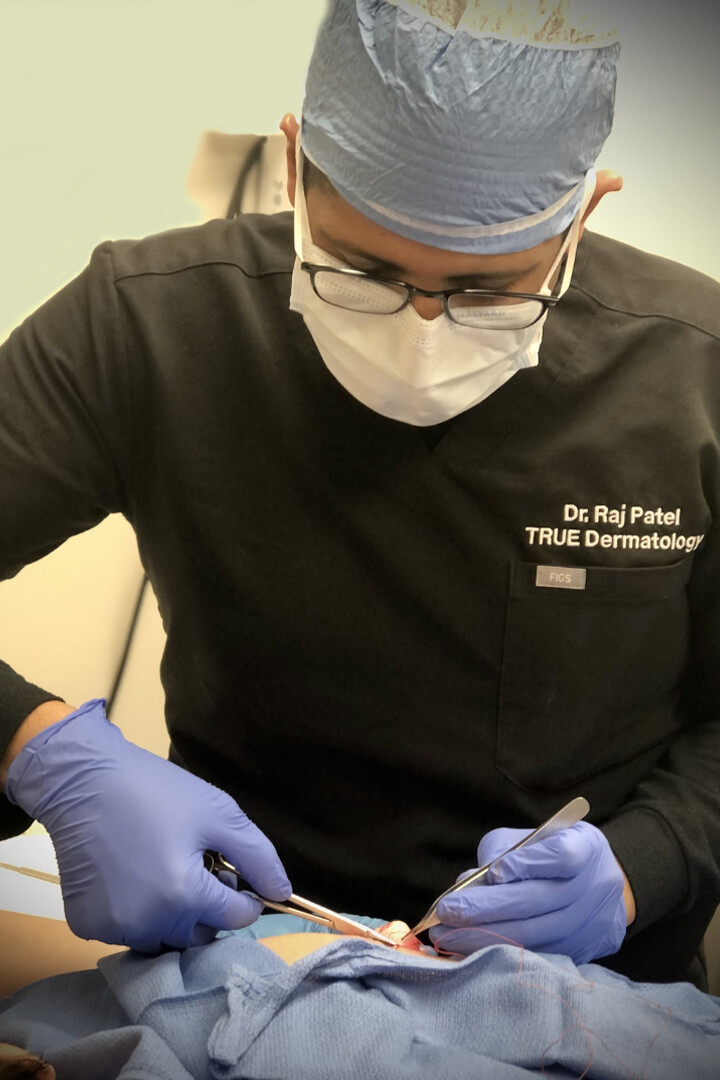Skin Cancer

We specialize in Mohs and reconstructive surgery.
Mohs microscopic surgery is the most advanced technique for removing skin cancer.
Skin Cancers & Services
Actinic Keratoses
Actinic keratoses (AKs) are common precancers that form on skin damaged by long-term sun exposure or use of tanning beds.
Basal Cell Carcinoma
Basal cell carcinoma is the most common form of skin cancer. These carcinomas typically grow slowly, making them easier to catch and treat early.
Dysplastic Nevus
A dysplastic nevus is a mole that differs from other moles. It may have an irregular border, a different color (or a mix of colors), an an atypical size or texture.
Squamous Cell Carcinoma
Squamous cell carcinoma is the second-most common form of skin cancer. It's found on the face, the ears, neck, scalp and hands.
Dermatopathology
Dermatopathology is a combination of dermatology and pathology that allows us to provide quick, accurate diagnoses for skin, hair and nail diseases.
Mohs Surgery
Mohs microscopic surgery is the most advanced technique for removing skin cancer. Dr. Patel is a fellowship-trained surgeon, so you are in good hands.

Diagnosis
“I think of skin cancer as a weed in your garden,” Dr. Patel says, and it’s also a helpful way to talk about the steps of a skin cancer diagnosis.
The first step is to identify the cancer through a biopsy. Once we diagnose the specific type of cancer, we will decide together if Mohs surgery is the right solution.
The biopsy removes the visible portion of the tumor, but the roots of some cancers persist and will continue to grow unless removed — just like the weed in the garden. That’s why early diagnosis and creation of a treatment plan are so important.
Mohs Surgery
Mohs micrographic surgery is a method for removing skin cancer that combines surgery with microscopic analysis as each layer of tissue is removed. Mohs produces the highest success rate.
At True Dermatology, we are lucky to have Dr. Patel, a fellowship-trained Mohs surgeon.
The advantages of Mohs include:
- The smallest quantity of skin is removed.
- 100% of the edges are checked.
- You will know on the day of your surgery that you are skin cancer-free.
- Cosmetic repair or reconstruction can follow immediately after your surgery, during the same visit, because we are confident that all the cancer has been removed.
- No sedation or general anesthesia is required.


Sun Safety Matters
Prevention is the best way to reduce your risk of skin damage.
Follow our tips for staying sun safe, and read Dr. Patel’s advice on choosing a sunscreen.
And if you have a skin lesion that has changed or doesn’t look right, call us today at 205-624-2100 for a skin check.
Skin Cancer FAQs
Skin cancer is the abnormal, uncontrolled growth of skin cells caused by radiation from the sun. According to the American Academy of Dermatology (AAD), one in five people will develop skin cancer in their lifetime.
Risk factors include pale skin, family history of skin cancers, being over 40 years old and regular sun exposure. Fortunately, skin cancer is almost always curable if detected and treated early.
The most common skin cancers are basal cell carcinoma, squamous cell carcinoma and melanoma. About 80 to 85% of skin cancers are basal cells, affecting the uppermost layer of the epidermis. Squamous cell carcinoma accounts for 10% of all skin cancers and affects cells in the middle layer of the epidermis. The most serious, and most rare, of skin cancers are melanomas. Melanomas are dangerous since they can metastasize quickly. Melanomas are the leading cause of skin cancer deaths.
Skin cancers vary in shape, color, size and texture, so any new, changed or otherwise suspicious growths or rashes should be examined by a physician. Early intervention is essential to preventing cancer from spreading.
Depending on your skin cancer, various treatment recommendations will be discussed along with cure rates and cosmetic outcomes. Many of these treatments have high cure rates, but Mohs micrographic surgery uniformly produces the highest success rate, especially for the most difficult tumors.
Work with Dr. Patel and the team at True Dermatology to determine the best treatment option for you.
Traditionally, skin cancers have been treated by surgically removing large areas of skin. This leaves the patient with a sizable wound and possibly a long, wide scar. Additionally, a small percentage of these patients will still have cancer remaining in their bodies, requiring additional surgery.
Now patients diagnosed with skin cancer can have a procedure called Mohs Micrographic Surgery, which offers a greater than 99% clearance rate! This state-of-the-art surgery is a delicate and precise procedure that spares as much skin as possible, providing the most optimal cosmetic outcome. Most importantly, when patients leave the office, they know all the cancer has been removed!
Mohs surgery has the highest cure rate — up to 99% for nonmelanoma skin cancers, such as basal cell carcinoma and squamous cell carcinoma.
It is appropriate for most skin cancers and is especially suitable for skin cancer that:
- Is in an area where it’s important to preserve healthy tissue for best functional and cosmetic results
- Has been treated previously and has come back
- Is located near scar tissue
- Is large, greater than 1 cm in diameter
- Does not have clearly defined edges
- Is growing rapidly or uncontrollably
- Is an aggressive subtype (i.e., sclerosing or infiltrating basal cell carcinoma)
- Develops in immunocompromised patients
Dr. Patel is fellowship-trained in Mohs surgery by the American College of Mohs Surgery (ACMS).
The opportunity to participate in Mohs training is extremely competitive.
After completing a residency in dermatology or a related field, a physician can apply to participate in an ACMS-approved fellowship training program. Qualified applicants who have passed a competitive review and selection process undergo a one- to two-year training program.
The training programs are designed to impart experience and judgment. They are comprehensive and rigorous by design because skin cancer occurs in a diversity of forms, degrees and areas of the body.
To complete an ACMS-approved fellowship, a physician must:
- Participate in a minimum of 500 Mohs surgeries.
- Learn to accurately interpret slides of tissue samples that have been removed during Mohs surgery.
- Perform a wide range of reconstructions, ranging from simple closures to complicated multi-step repairs.
Because doctors undergo training over months, they gain a breadth of exposure under the guidance of a qualified Mohs surgeon. This training includes rare tumor pathology, difficult tumor locations and complex wound reconstruction. The fellowship structure provides a depth of experience unmatched by other Mohs programs.
The doctor performing Mohs surgery typically assumes the following roles:
- Anesthesiologist
- Surgical oncologist
- Pathologist
- Plastic surgeon
The ACMS-trained surgeon combines the work of four separate doctors into one. Additionally, these procedures are done in our offices at True Dermatology, so there is no hospital or facility charges.
Once the cancer has been removed, reconstruction for optimizing the final functional and cosmetic result becomes the highest priority.
Dr. Patel will explain your options for repair of the wound, including natural healing, linear closure or using a skin flap or graft. This step will be completed in our office, typically during the same visit as your surgery.
Generally, post-surgical scars improve with time. The team at True Dermatology are experts in reconstruction and aesthetics and are available for you throughout the healing process to discuss any concerns.